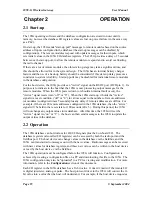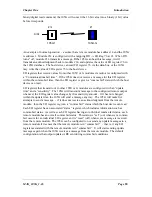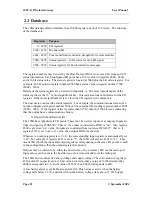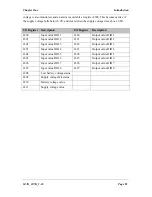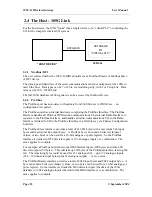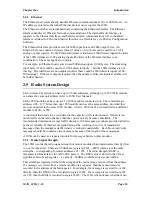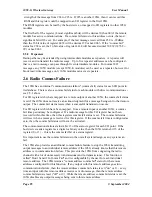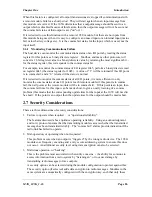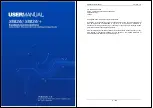
Chapter One
Introduction
MAN_105G_1.16
Page 10
The 105U-G is referred to as the 105G for the rest of this document, to clearly differentiate
from normal 105U I/O modules.
Ordering information:
105U-G-MD1
Modbus Master & Slave / DF1 interface
105U-G-PR1
Profibus-DP Slave interface
105U-G-PR2
Profibus-DP Master interface
105U-G-ET1
Ethernet interface - Modbus TCP, Ethernet IP, FTP, HTML, Email
105U-G-DE1
DeviceNet Slave interface
105U-G-M+1
Modbus Plus Slave interface
1.1.1
Modbus / DF1 105G
The 105U-G-MD1 can be configured for Modbus master interface, Modbus slave, or DF1.
Modbus is a Master-Slave protocol originally developed by Modicon (now part of the
Schneider group). It became a popular interconnect protocol with many equipment
manufacturers. One Modbus master controls the Modbus network communications, which
can comprise up to 250 Modbus slave devices. The Modbus master can read or write I/O
values to/from Modbus slaves. The 105G can be configured as either Modbus Master or
Modbus Slave. The variation of Modbus supported by the 105G is “Modbus RTU”
(also
known as “Modbus binary”).
DF1 is an Allen-Bradley protocol (Allen-Bradley is now part of the Rockwell Automation
group). DF1 offers both full-duplex (point to point) and half-duplex (multidrop) operation.
The 105G only supports the full-duplex operation - this is the default DF1 mode on most
equipment. DF1 full-duplex is a “peer-to-peer” protocol. Either DF1 device can initiate
commands to the other device, and both devices will respond to commands from the other
device.
The 105U-G-MD1 has two serial connections - RS232 and RS485, on the bottom end plate
of the module. The serial port provides both RS232 and RS485 hardware connections,
however both connections are paralleled internally - both connections cannot be used at the
same time. Either RS232 or RS485 can be used for Modbus communications,
however only
the RS232 port can be used for DF1
. The serial port must be configured to suit the host
device. Serial data rates between 1200 and 19200 baud may be selected, and character types
with 7 or 8 data bits, even/odd/none parity, and 1 or 2 stop bits may be selected.
The Modbus/DF1 105G has 4300 general-purpose I/O registers. Each discrete, analog and
pulse I/O point takes up one register.
1.1.2
Profibus 105G
The Profibus 105G provides Profibus-DP Slave functionality according to EN 50170.
Profibus is a popular automation fieldbus that originated in Germany and is used extensively
by Siemens and other automation suppliers.
The Profibus connection on the 105G is optically isolated RS485 using an on-board DC/DC
converter. The Profibus port has automatic baudrate detection (9600 bit/s - 12 Mbit/s).
The Profibus Slave 105G (PR1) will connect to a Profibus LAN controlled by an external
master device. The Profibus Master 105G (PR2) will control communications on a Profibus
LAN, and can connect to up to 125 Profibus slave devices.

















